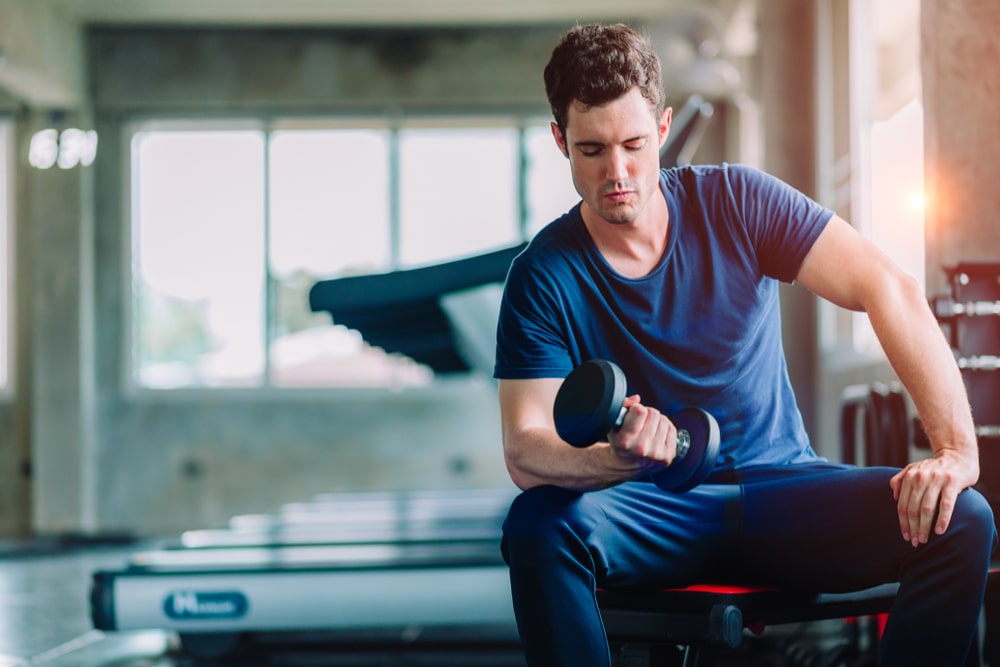Unlock the Secrets of Excess Sweat: What Your Body is Really Trying to Tell You During Workouts
You’re finally hitting your groove at the gym, and just when you think you’ve got everything under control, you notice something alarming: you’re soaking through your clothes. If you’ve ever found yourself feeling like you’re the sweatiest person in the room while everyone else looks fresh, it can be frustrating and a little embarrassing. Understanding why you might sweat more than others during your workouts can empower you, making you feel more in tune with your body and less self-conscious. ### The Science Behind Sweating During Exercise When you exercise, sweating is your body’s heroic way of keeping cool. Picture this: as you get moving or if the temperature starts to rise, your sweat glands kick into action, releasing beads of moisture. These beads evaporate from your skin, helping to cool you down. In fact, this process accounts for about 22% of the heat your body loses as it works to maintain a steady internal temperature. It’s a natural reaction—an intricate mechanism your body employs to keep you balanced during physical activity. ### Factors That Might Lead to Increased Sweating If you’re consistently feeling like you’re drenched while others seem untouched by sweat, it’s worth digging into what’s going on. Sometimes, it’s simply that you’re pushing harder during your workouts compared to those around you. High-intensity workouts can ramp up your body temperature, resulting in more sweat production. On the other hand, you might be dealing with something known as hyperhidrosis. This condition refers to excessive sweating that can happen even when you’re not hot or physically active. It’s more common than you might think; estimates suggest it affects around 5% of Americans. It can also be linked to other health issues, including hormonal imbalances. If you notice you’re sweating excessively without a clear reason, it might be a good moment to check in with your healthcare provider. Additionally, an increase in heart rate, whether from activity or medications, can ramp up sweating. If you think your perspiration might be linked to something other than your exercise routine, don’t hesitate to chat with your doctor about it. They can help you pinpoint any underlying causes that might be contributing to your excessive sweating. ### 4 Strategies to Manage Excessive Sweating Although sweating is a vital part of how your body regulates temperature, there are ways to manage it, especially during those intense workout sessions. #### 1. Utilize a Combined Antiperspirant and Deodorant You might think all deodorants are created equal, but there’s a significant difference between them and antiperspirants. If your underarm sweat is particularly concerning, look for a product that combines both antiperspirant and deodorant. Antiperspirants work by blocking the sweat glands’ ability to produce moisture, while deodorants specifically combat odor. Using both can significantly boost your comfort level and keep you feeling fresher throughout your workout. #### 2. Assess Your Medications Do you take prescription medications? It’s worth taking a closer look at their side effects. Some can lead to increased sweating. If you suspect your medication might be the culprit, don’t hesitate to speak with your doctor. They might be able to suggest different prescriptions that won’t leave you feeling like a waterfall during your workouts. #### 3. Choose Moisture-Wicking Fabrics Take a moment to consider what you’re wearing to the gym. If your workout gear is primarily made from heavy cotton, that might be working against you. Opt for moisture-wicking fabrics instead. These materials are designed specifically to pull sweat away from your body, helping it evaporate more effectively. This can lead to a less uncomfortable workout experience. But don’t be lulled into thinking that you need to drink less water because your clothes feel drier; you’re still likely sweating the same amount. So, keep chugging that water! Staying hydrated is key for your brain and muscles. #### 4. Seek Medical Advice Speaking of solutions, your doctor can be a great ally when it comes to managing excessive sweating. There are treatments available that might be just what you need. For instance, Botox injections can target sweat glands in the underarms, potentially reducing sweat production. Another option you might look into is called iontophoresis. This involves immersing your hands or feet in shallow water while a device sends a mild electrical current through the skin. It’s effective for many people and could be a solid option if you don’t have any metallic implants. Feeling overwhelmed by sweating during your workouts is more common than you might think. But remember, understanding your body leads to managing it better, allowing you to focus on what truly matters: achieving your fitness goals without feeling self-conscious. By exploring these strategies and options, you can reclaim your confidence and truly enjoy your workout experience.



















